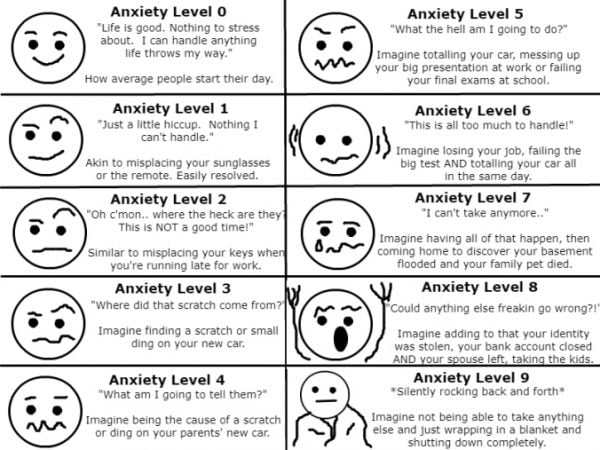Whenever I start to explain the part of my mental illness diagnosis that includes severe anxiety, I always receive confused looks. They are usually followed by judgemental comments about how “everyone has problems and stress in their lives,” telling me that I need to “learn to cope and work through it all.”
I get told that I “shouldn’t let every little thing get to me” and that I’d be so much happier if I “stopped stressing over everything and just mellowed out.”
I have others that have gone so far as to make accusations about whether my anxiety is even real or just in my head. They’ll question how I could claim I’m “too anxious” to go somewhere to fill out paperwork yet am “perfectly comfortable attending things like farmer’s markets or street fairs.” I’ve tried to explain that it isn’t the same thing.




Top Comments
Here is when you will experience the 10: when you go on a medication like Paxil and then quit cold turkey. I did, back in the day when people weren't aware what the consequences were.
I thought I'd seen everything that anxiety could offer, but when you're in withdrawal from these medications, the sky's the limit. I have no words to describe how awful it was.
I have Generalized Anxiety Disorder--mostly with the dentist (I have termed it DAD!-Dental Anxiety Disorder. One of my dentists teaches at Marquette Dental School and was going to tell his students about my "self diagnosis") BUT...what I do not understand from speaking to many dentists is the lack of education regarding anxiety. I have a weighted blanket that I love! Want to haul it with me to the dentist office. I also downloaded an app "Breethe" on my iPhone that can help me in different situations. Hugs to you that live in "5-6" days.